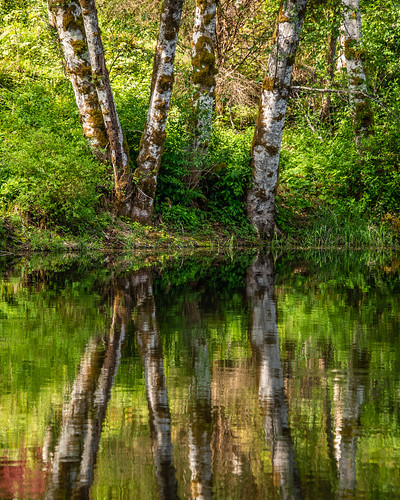“Everybody needs beauty as well as bread, places to play in and pray in, where nature may heal and give strength to body and soul alike.” John Muir
We protect – with fences, and laws, and force – the things we value. Yet, far too often, we fail to recognize the value of intangibles – sunlight, ancient forests, open trails, beauty. We either take them for granted or we place a higher value on development, profit, and what we see as progress. But not always. Here are a few examples of cities and countries that are attempting to recognize and protect intangibles.
Right to Light
Visit the downtown core of any large city and you find yourself surrounded by skyscrapers that blot out the sky and shade the streets below. “For cities, shadows present both a technical challenge — one that can be modeled in 3-D and measured in ‘theoretical annual sunlight hours’ lost — and an ethereal one. They change the feel of space and the value of property in ways that are hard to define. They’re a stark reminder that the new growth needed in healthy cities can come at the expense of people already living there. And in some ways, shadows even turn light into another medium of inequality — a resource that can be bought by the wealthy, eclipsed from the poor.”
Some cities are endeavouring to protect sunlight. San Francisco has a “sunlight ordinance” that legislates the review of plans for buildings over 40 feet that might shadow public parks. Toronto’s Tall Buildings Guidelines stipulate that tall buildings must be 25 metres apart. Toronto also takes into consideration “pedestrian comfort” by reviewing the shadows created by proposed buildings, paying particular attention to shadows over public areas such as Nathan Phillip’s Square.
Ancient Trees
There are trees in the United Kingdom that are hundreds, even thousands, of years old. Ancient woodlands are protected by the National Planning Policy Framework, but there is a loophole in the law permitting development to go ahead if "the economic benefit of a development outweighs the loss.” The Woodland Trust is campaigning to close this loophole, so far with no success.
Tourists flock to visit California’s redwoods. But their eagerness to take a selfie next to one of these ancient giants is compacting the soil and damaging the trees’ roots. The Redwood Park Conservancy is fundraising to build raised walkways so that tourists will no longer damage the ground cover and hurt the trees.
Right to Roam
England has protected its footpaths, granting public access to private land, since 1925. Andrew Weaver, leader of BC’s Green Party has introduced a Right to Roam Act to protect public access to lakes, rivers, and public forests through privately owned land. Weaver says, “The ability to access and experience nature is a public right, and we must protect it. . . . People protect what they know and love. If we become disconnected from our environment we risk disengaging with the fight for its future.”
Beauty
It may seem quaint, but the City of London safeguards the view of St. Paul’s Cathedral from King Henry’s Mound in Richmond Park. Developers have been forced to alter their plans to protect the viewline.
The City of Vancouver has 27 protected view corridors to maintain views of the North Shore mountains, the ocean, and the city skyline. They do, however, make exceptions, which are not always supported by the general public.
Voting for Nature
In 2014, England’s Wildlife Trusts and the Royal Society for the Protection of Birds proposed a nature and wellbeing act that would put nature at the heart of decision-making both locally and nationally and would commit to securing the recovery of nature in a generation. The Blue Dot movement is similar, advocating for legal recognition of every Canadian’s right to a healthy environment.
The proposed laws are examples of “positive environmentalism, setting the agenda, rather than merely responding to the policies we don’t like. We must do both, but while those who love wildlife have often been effective opponents, we have tended to be less effective proponents.”


